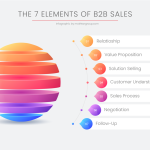The evolution of education has always been shaped by technological and social advancements, and in the 21st century, blended learning stands as one of the most transformative paradigms in the field. Combining the strengths of traditional face-to-face teaching with the flexibility and innovation of eLearning, blended learning has proven to be a powerful model for addressing the diverse needs of modern students. This article explores the pedagogical foundations, benefits, and challenges of blended learning, while providing actionable insights into how educational institutions can successfully implement this hybrid approach.
Blended learning has the potential to transform education by personalizing learning experiences and leveraging the power of technology.
Arne Duncan, Former US Secretary of Education

The Pedagogical Foundations of Blended Learning
Blended learning is deeply rooted in educational theories that emphasize active engagement and the personalization of learning. Constructivist learning theory posits that students learn best when they actively construct their understanding through interaction with materials, peers, and instructors. Blended learning leverages this principle by providing both in-class interactions and online activities that promote self-directed exploration.
Furthermore, cognitive load theory highlights the importance of balancing the amount of information presented to students to optimize learning. Digital tools in blended learning environments, such as interactive simulations or self-paced modules, help manage cognitive load by allowing students to process information at their own pace. Additionally, social learning theory underscores the value of collaborative activities, which are seamlessly facilitated in blended models through discussion forums, group projects, and virtual classrooms.

Benefits of Blended Learning for Educational Institutions
Blended learning offers a range of advantages that enhance the educational experience for both students and educators. One of its most significant benefits is flexibility. By integrating digital components, students can access course materials anytime and anywhere, enabling them to balance academic responsibilities with personal and professional commitments. This flexibility is particularly valuable for non-traditional students, such as working professionals or those with caregiving responsibilities.
Another major benefit is personalized learning. Through data analytics embedded in digital platforms, instructors can monitor student progress and tailor interventions to meet individual needs. For example, students who struggle with a specific concept can receive targeted support through supplementary online resources or one-on-one discussions during in-person sessions.
Blended learning also fosters increased engagement. Digital tools like gamified quizzes, interactive videos, and virtual simulations make learning more dynamic and captivating. When paired with in-person discussions and hands-on activities, these tools create a holistic and stimulating learning environment. Furthermore, the hybrid model prepares students for the digital economy by familiarizing them with online tools and collaborative technologies that are ubiquitous in modern workplaces.
Challenges in Adopting Blended Learning
Despite its numerous benefits, the implementation of blended learning is not without challenges. One significant barrier is resistance to change. Many educators accustomed to traditional teaching methods may be hesitant to adopt digital tools, perceiving them as complex or as undermining their authority in the classroom. This resistance is often rooted in a lack of familiarity with the technology and insufficient training.
Another challenge is the digital divide. Not all students have equal access to reliable internet connections or modern devices, which can exacerbate existing educational inequities. Institutions must invest in infrastructure and provide students with the necessary tools to ensure that all learners can participate fully in blended learning environments.
Additionally, the effective integration of online and offline components requires careful planning and design. A poorly implemented blended model can lead to disjointed experiences, where students struggle to connect in-person activities with online assignments. Achieving coherence and alignment between the two modes of delivery is essential for the success of a blended learning program.

Strategies for Successful Implementation
To realize the full potential of blended learning, educational institutions must adopt a strategic approach to its design and deployment. Professional development for educators is paramount. Providing training on digital tools and instructional design can help teachers feel confident and competent in blended environments. Institutions should also foster a culture of innovation, encouraging faculty to experiment with new technologies and pedagogical strategies.
Addressing the digital divide is equally important. Schools and universities can partner with technology providers to offer affordable devices and internet solutions for students in need. Additionally, digital literacy initiatives can empower both students and educators to navigate online platforms effectively.
Finally, institutions should prioritize the alignment of in-person and digital components. This can be achieved through backward design, where course objectives drive the selection of instructional methods and assessments. By ensuring that online and offline activities complement each other, educators can create seamless and meaningful learning experiences.
Blended learning represents a significant step forward in the evolution of education, offering a model that bridges the best of traditional and digital pedagogies. By embracing this hybrid approach, educational institutions can provide flexible, personalized, and engaging learning experiences that meet the needs of diverse student populations. However, the successful implementation of blended learning requires thoughtful planning, investment in resources, and a commitment to fostering innovation. As we navigate the future of education, blended learning stands as a beacon of possibility, illustrating how tradition and technology can come together to transform the learning experience.





